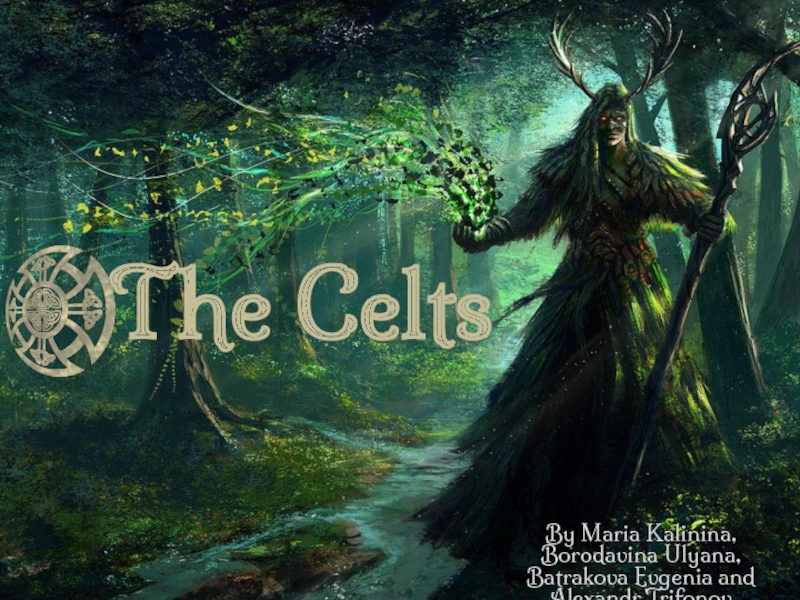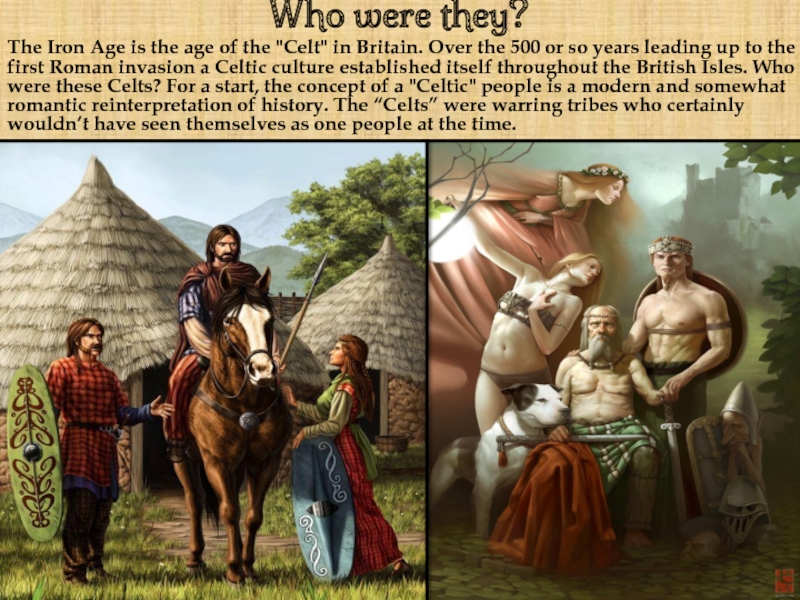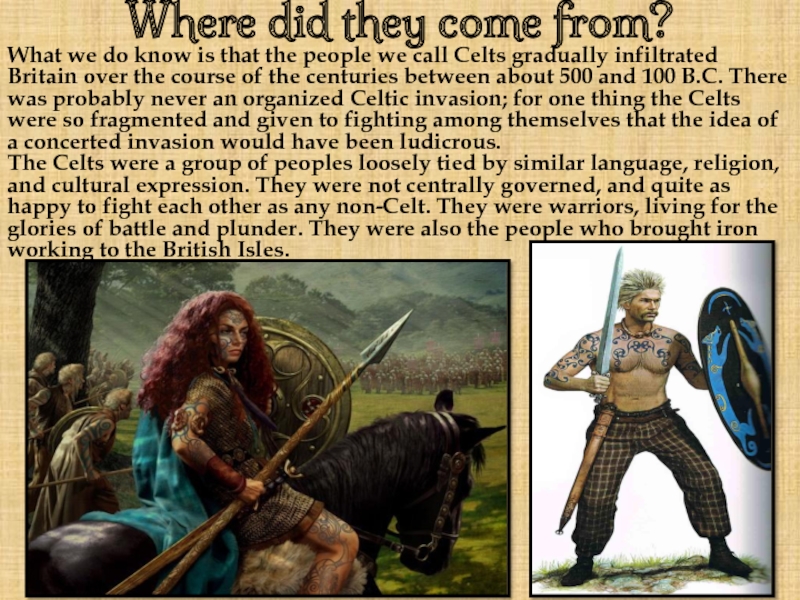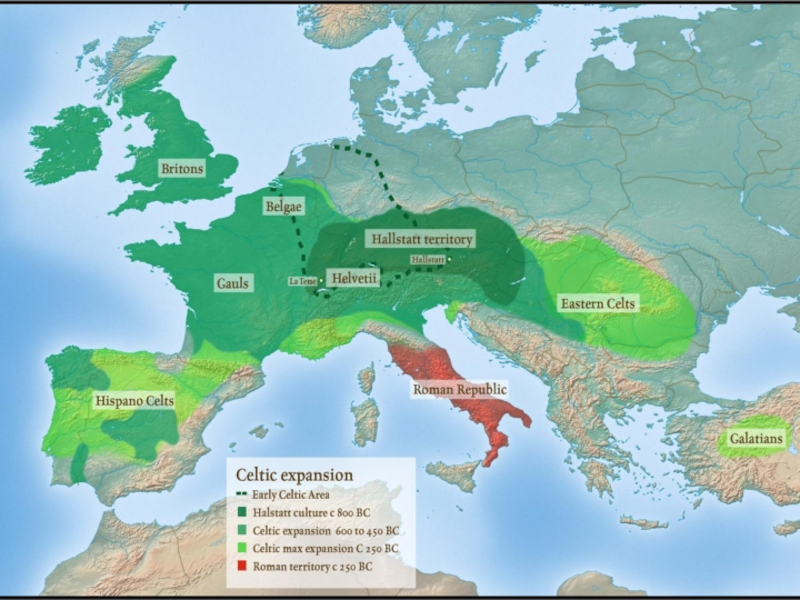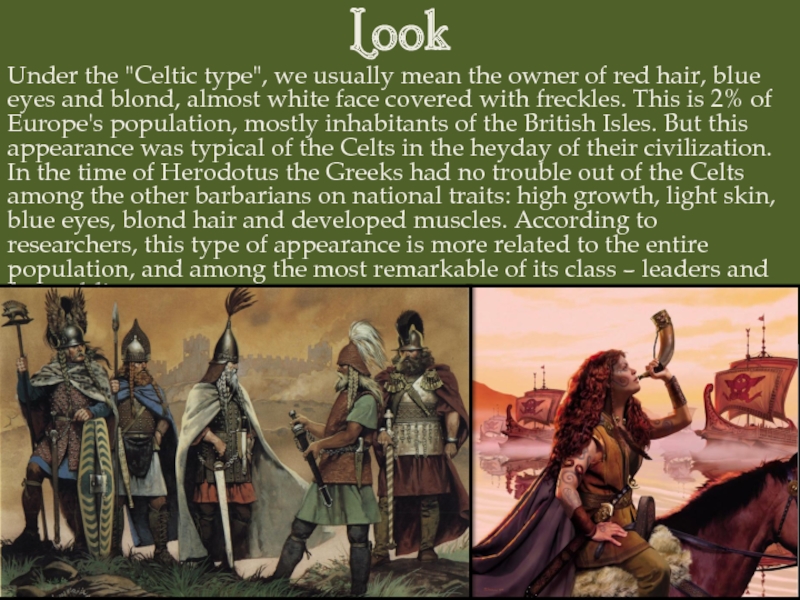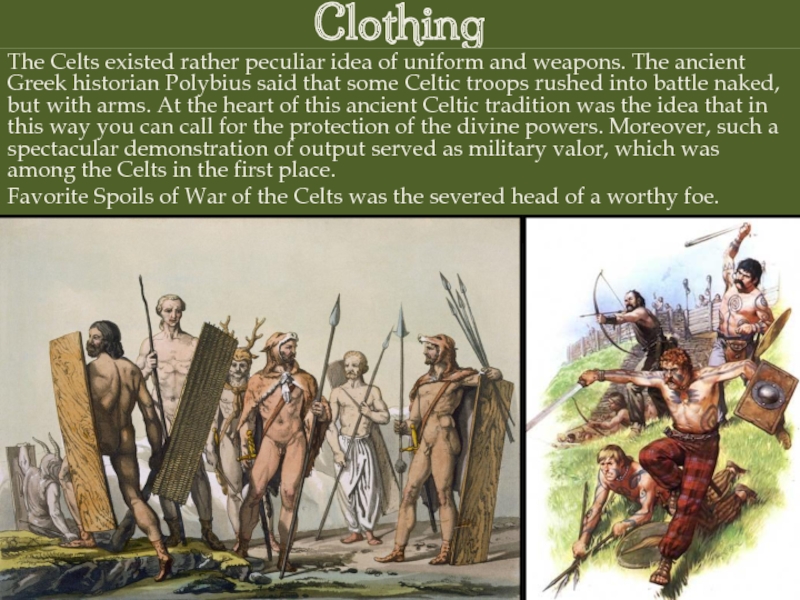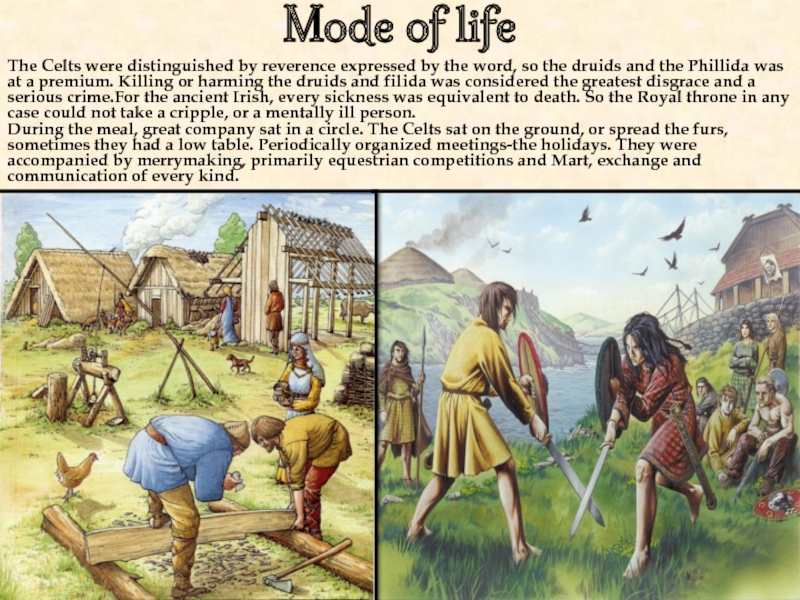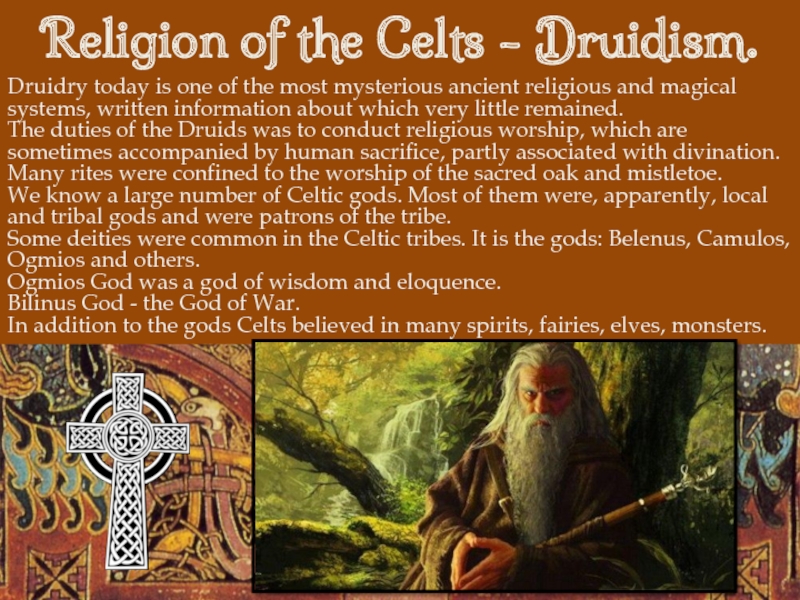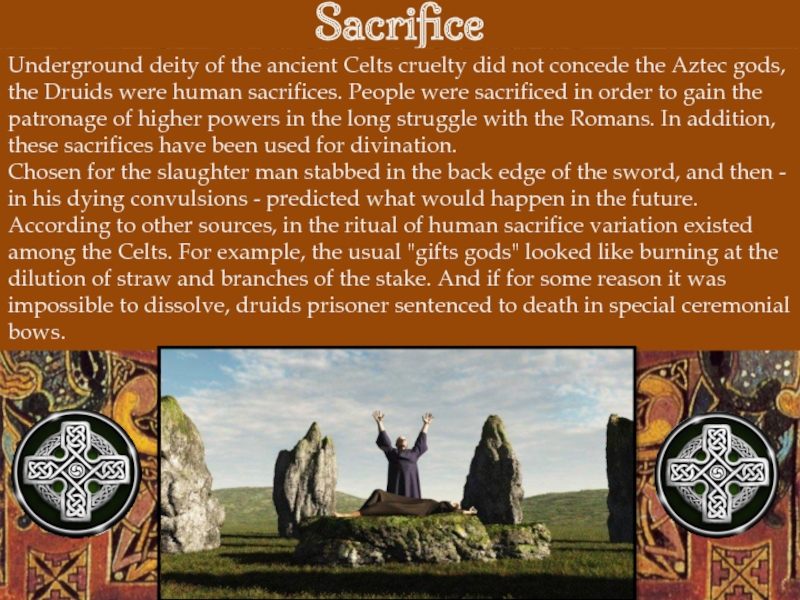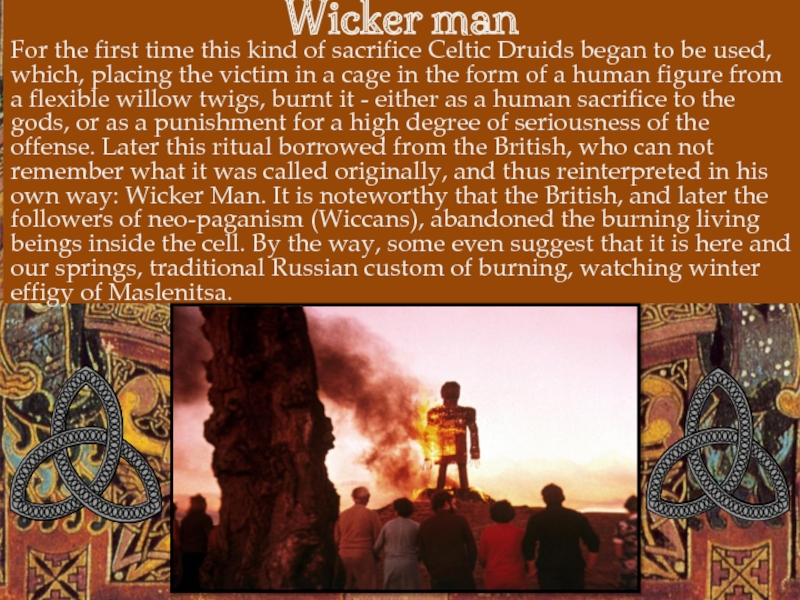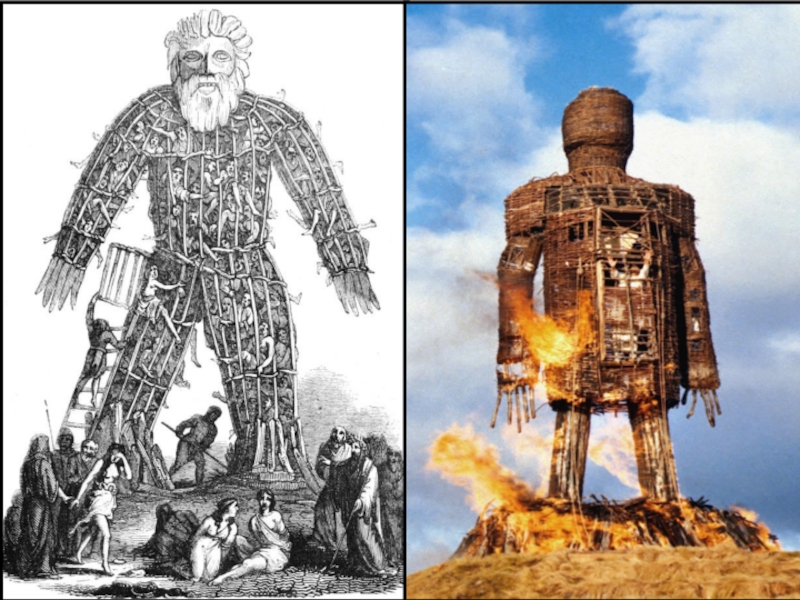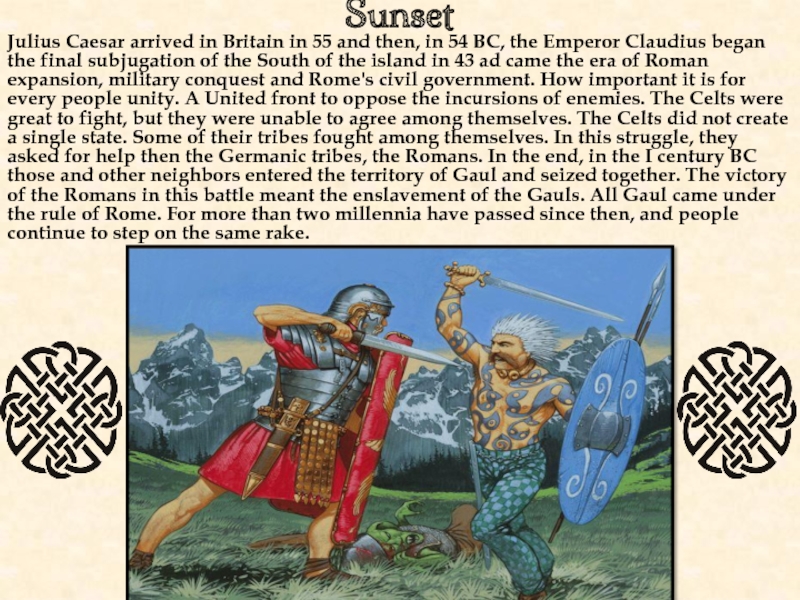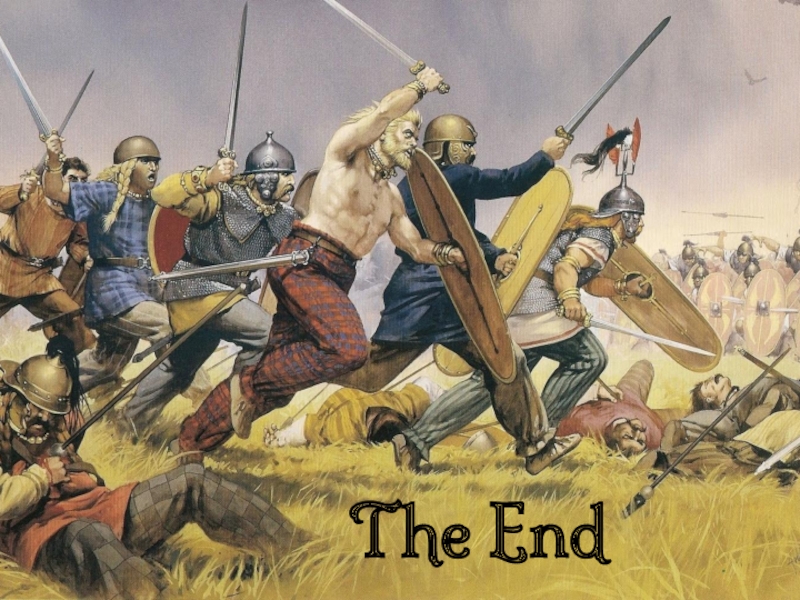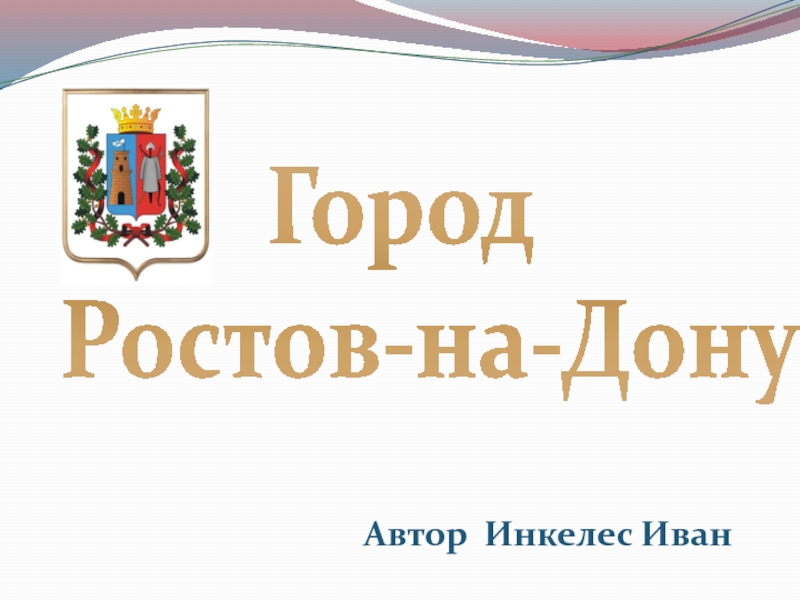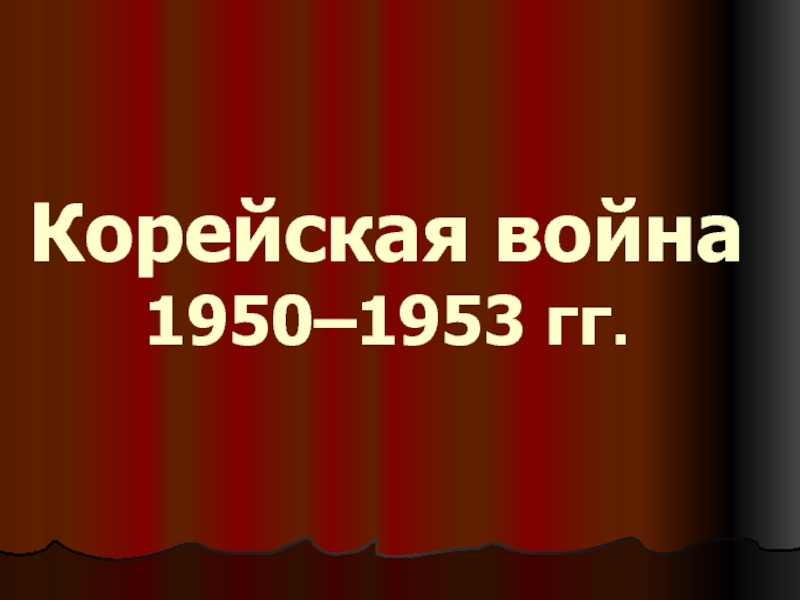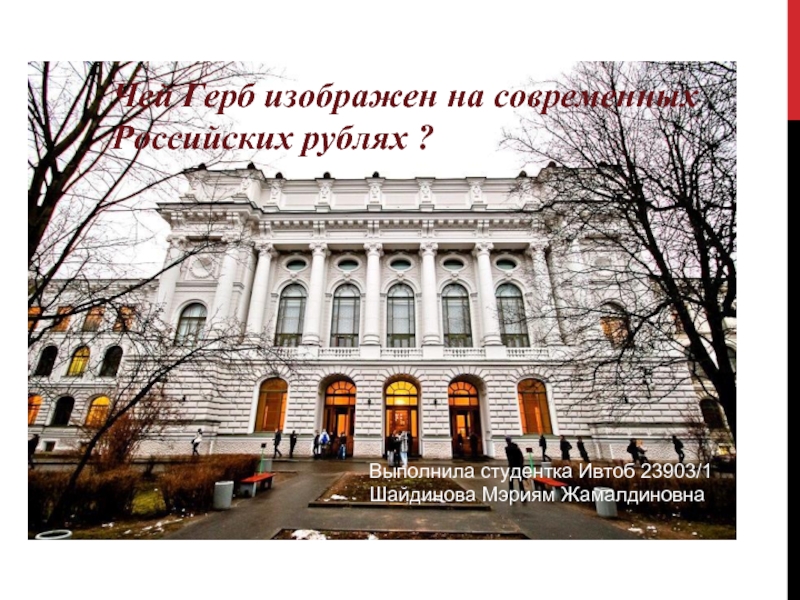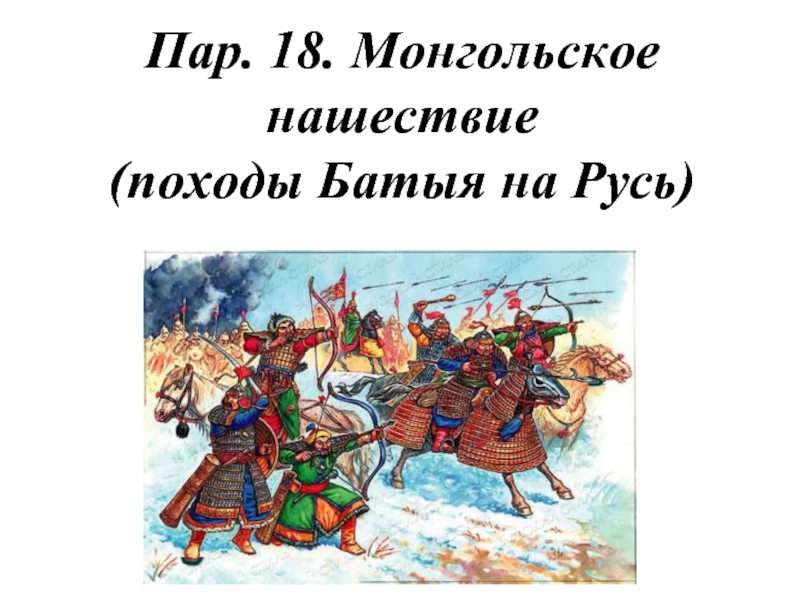- Главная
- Разное
- Дизайн
- Бизнес и предпринимательство
- Аналитика
- Образование
- Развлечения
- Красота и здоровье
- Финансы
- Государство
- Путешествия
- Спорт
- Недвижимость
- Армия
- Графика
- Культурология
- Еда и кулинария
- Лингвистика
- Английский язык
- Астрономия
- Алгебра
- Биология
- География
- Детские презентации
- Информатика
- История
- Литература
- Маркетинг
- Математика
- Медицина
- Менеджмент
- Музыка
- МХК
- Немецкий язык
- ОБЖ
- Обществознание
- Окружающий мир
- Педагогика
- Русский язык
- Технология
- Физика
- Философия
- Химия
- Шаблоны, картинки для презентаций
- Экология
- Экономика
- Юриспруденция
The Celts презентация
Содержание
- 1. The Celts
- 2. Who were they? The Iron Age is
- 3. Where did they come from? What we
- 5. Under the "Celtic type", we usually mean the
- 6. Clothing The Celts existed rather peculiar idea
- 7. Mode of life The Celts were distinguished
- 8. Religion of the Celts - Druidism. Druidry
- 9. Sacrifice Underground deity of the ancient Celts
- 10. Wicker man For the first time this
- 12. Sunset Julius Caesar arrived in Britain in
- 13. The End
Слайд 2Who were they?
The Iron Age is the age of the "Celt"
in Britain. Over the 500 or so years leading up to the first Roman invasion a Celtic culture established itself throughout the British Isles. Who were these Celts? For a start, the concept of a "Celtic" people is a modern and somewhat romantic reinterpretation of history. The “Celts” were warring tribes who certainly wouldn’t have seen themselves as one people at the time.
Слайд 3Where did they come from?
What we do know is that the
people we call Celts gradually infiltrated Britain over the course of the centuries between about 500 and 100 B.C. There was probably never an organized Celtic invasion; for one thing the Celts were so fragmented and given to fighting among themselves that the idea of a concerted invasion would have been ludicrous.
The Celts were a group of peoples loosely tied by similar language, religion, and cultural expression. They were not centrally governed, and quite as happy to fight each other as any non-Celt. They were warriors, living for the glories of battle and plunder. They were also the people who brought iron working to the British Isles.
Слайд 5Under the "Celtic type", we usually mean the owner of red hair,
blue eyes and blond, almost white face covered with freckles. This is 2% of Europe's population, mostly inhabitants of the British Isles. But this appearance was typical of the Celts in the heyday of their civilization. In the time of Herodotus the Greeks had no trouble out of the Celts among the other barbarians on national traits: high growth, light skin, blue eyes, blond hair and developed muscles. According to researchers, this type of appearance is more related to the entire population, and among the most remarkable of its class – leaders and free soldiers.
Look
Слайд 6Clothing
The Celts existed rather peculiar idea of uniform and weapons. The
ancient Greek historian Polybius said that some Celtic troops rushed into battle naked, but with arms. At the heart of this ancient Celtic tradition was the idea that in this way you can call for the protection of the divine powers. Moreover, such a spectacular demonstration of output served as military valor, which was among the Celts in the first place.
Favorite Spoils of War of the Celts was the severed head of a worthy foe.
Favorite Spoils of War of the Celts was the severed head of a worthy foe.
Слайд 7Mode of life
The Celts were distinguished by reverence expressed by the
word, so the druids and the Phillida was at a premium. Killing or harming the druids and filida was considered the greatest disgrace and a serious crime.For the ancient Irish, every sickness was equivalent to death. So the Royal throne in any case could not take a cripple, or a mentally ill person.
During the meal, great company sat in a circle. The Celts sat on the ground, or spread the furs, sometimes they had a low table. Periodically organized meetings-the holidays. They were accompanied by merrymaking, primarily equestrian competitions and Mart, exchange and communication of every kind.
Слайд 8Religion of the Celts - Druidism.
Druidry today is one of the
most mysterious ancient religious and magical systems, written information about which very little remained.
The duties of the Druids was to conduct religious worship, which are sometimes accompanied by human sacrifice, partly associated with divination. Many rites were confined to the worship of the sacred oak and mistletoe.
We know a large number of Celtic gods. Most of them were, apparently, local and tribal gods and were patrons of the tribe.
Some deities were common in the Celtic tribes. It is the gods: Belenus, Camulos, Ogmios and others.
Ogmios God was a god of wisdom and eloquence.
Bilinus God - the God of War.
In addition to the gods Celts believed in many spirits, fairies, elves, monsters.
Слайд 9Sacrifice
Underground deity of the ancient Celts cruelty did not concede the
Aztec gods, the Druids were human sacrifices. People were sacrificed in order to gain the patronage of higher powers in the long struggle with the Romans. In addition, these sacrifices have been used for divination.
Chosen for the slaughter man stabbed in the back edge of the sword, and then - in his dying convulsions - predicted what would happen in the future.
According to other sources, in the ritual of human sacrifice variation existed among the Celts. For example, the usual "gifts gods" looked like burning at the dilution of straw and branches of the stake. And if for some reason it was impossible to dissolve, druids prisoner sentenced to death in special ceremonial bows.
Слайд 10Wicker man
For the first time this kind of sacrifice Celtic Druids
began to be used, which, placing the victim in a cage in the form of a human figure from a flexible willow twigs, burnt it - either as a human sacrifice to the gods, or as a punishment for a high degree of seriousness of the offense. Later this ritual borrowed from the British, who can not remember what it was called originally, and thus reinterpreted in his own way: Wicker Man. It is noteworthy that the British, and later the followers of neo-paganism (Wiccans), abandoned the burning living beings inside the cell. By the way, some even suggest that it is here and our springs, traditional Russian custom of burning, watching winter effigy of Maslenitsa.
Слайд 12Sunset
Julius Caesar arrived in Britain in 55 and then, in 54
BC, the Emperor Claudius began the final subjugation of the South of the island in 43 ad came the era of Roman expansion, military conquest and Rome's civil government. How important it is for every people unity. A United front to oppose the incursions of enemies. The Celts were great to fight, but they were unable to agree among themselves. The Celts did not create a single state. Some of their tribes fought among themselves. In this struggle, they asked for help then the Germanic tribes, the Romans. In the end, in the I century BC those and other neighbors entered the territory of Gaul and seized together. The victory of the Romans in this battle meant the enslavement of the Gauls. All Gaul came under the rule of Rome. For more than two millennia have passed since then, and people continue to step on the same rake.
